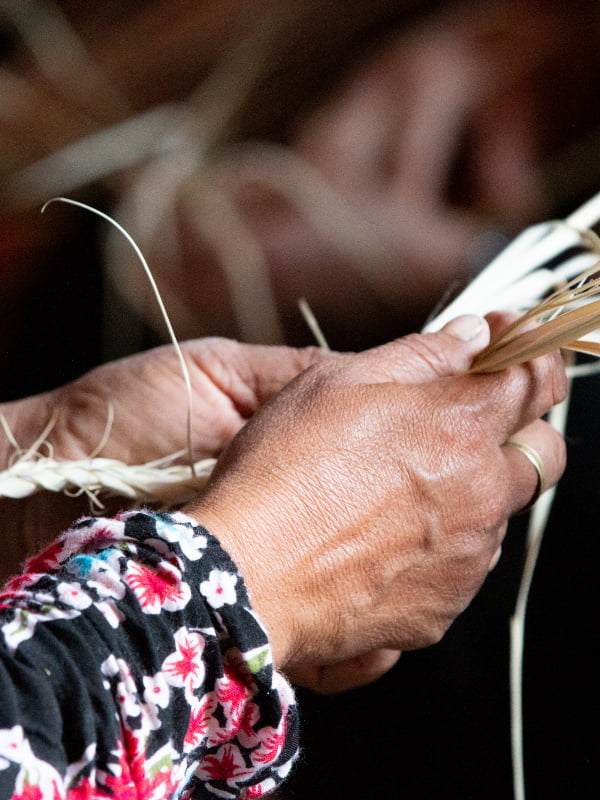RED sustainability criteria for biomass for the SDE++ scheme
If you wish to use biomass, other than wood pellets, for the generation of combined heat and power or for the production of green gas to feed into the gas network, you can apply for the Stimulation of Sustainable Energy Production (SDE++) scheme. In some cases, you will have to demonstrate that the biomass used meets the Renewable Energy Directive (RED) sustainability criteria.
Objective
The objective of the revised European Renewable Energy Directive (RED) is to stimulate the generation of sustainable energy. Whether your installation has to meet the RED sustainability criteria depends on whether you already had to meet the RED I sustainability criteria or the date on which you applied for the SDE++ subsidy.
- If you generate heat and/or power from liquid biomass, then you already had to meet the RED I sustainability criteria. You will therefore now also have to meet the RED II or RED III sustainability criteria.
- If you do not generate heat and/or power from liquid biomass and you have applied for an SDE++ subsidy after 21 December 2018, you will have to meet the sustainability criteria if the power output of your installation exceeds the thresholds as laid down in the RED II.
- If you do not generate heat and/or power from liquid biomass and you applied for an SDE++ subsidy before 21 December 2018, the biomass you use is not subject to sustainability criteria.
SDE++ categories
The Designation Regulation (Regeling aanwijzing categorieën duurzame energieproductie en klimaattransitie) and General Implementing Regulations for Stimulating Sustainable Energy Production and Climate Transition (Algemene uitvoeringsregeling stimulering duurzame energieproductie en klimaattransitie) state which facilities that have to meet the RED sustainability criteria. This applies to biomass facilities and facilities that burn wood pellets with a subsidy decision dated 2024 or later. A summary of the SDE++ categories to which these sustainability criteria apply is given below:
| SDE++ categories, other than wood pellet facilities | Definition used for power output | RED criteria apply to power outputs of |
|---|---|---|
| Solid biomass for the generation of heat and/or power | Boiler's nominal input capacity | ≥7,5 MW* |
| Liquid biomass for the generation of heat and/or power | Boiler's nominal input capacity | No lower threshold |
| Production of biogas for the generation of heat and/or power | Boiler's nominal input capacity | ≥2 MW* |
| Production of biogas to feed into the gas network | Nominal sustainable gas power output | ≥2 MW* |
* The exact description of the categories can be found in the Designation Regulation (Regeling aanwijzing categorieën duurzame energieproductie en klimaattransitie).
Other sustainability criteria apply to installations that burn wood pellets with a subsidy decision dated before 2024: see the page on Sustainability requirements for solid biomass under the SDE++ scheme.
Demonstrating sustainability
You have to demonstrate that the biomass used meets the RED requirements. You do so by using certification schemes that have been approved by the European Commission (EC). Your business itself must usually also be certified.
See the list of certification schemes that have been approved by the EC
For some types of installations, certification of the biomass and of the business are not compulsory: for example, manure mono-fermenters and sewage sludge fermenters. See the ‘Verification Protocol RED 2025’ for the facilities to which the protocol applies and for other ways to demonstrate their sustainability.
Conformity year statement
Are you an energy producer? If so, you report annually on the sustainability of the biomass used by means of an conformity year statement. In the conformity year statement you list the sustainability characteristics of all the biomass you have used at your facility.
You can download the following documents (in Dutch) to use in your reports:
Verification Protocol
A recognised CAB draws up the conformity year statement. What requirements the biomass you use at your facility have to meet? These are set out in the RED. The requirements depend on the type of biomass you use. The way in which you demonstrate sustainability is stated in the Verification Protocol. More information about the role and requirements of CABs is available in the section on CABs below.
A new version of the RED Verification Protocol has been published in January 2025. The Dutch version of the Verification Protocol 2025 can be found below. The 2025 version must be used for verification of individual consignments of biomass that change legal ownership after December 31, 2024. To prepare the conformity year statement for energy supplied in 2024, you must refer to the 2023 version of the Verification Protocol. An English version of the Verification Protocol 2023 can be found below. To prepare the conformity year statement for energy supplied in 2025, version 2025 should be used.
Both versions of the Verification Protocol have been amended so that it can also be used to demonstrate the sustainability of biomass in the context of the Emissions Trading System (ETS) zero emissions report. See the Dutch Emissions Authority (NEa)’s website for more information on this.
Conformity Assessment Bodies (CABs)
CABs play a role in demonstrating the sustainability of biomass. They carry out two different tasks:
- Certification of biomass and energy operators. They work for a certification scheme recognised by the European Commission.
- Carrying out verifications based on the Verification Protocol. This applies to the verification of individual consignments or issuing an conformity year statement to an energy producer. This can only be carried out by CABs recognised by the Minister of Climate Policy and Green Growth (KGG) for working with the Verification Protocol.
To be recognised, a CAB must be accredited for the Verification Protocol SDE++ RED II by the Dutch Accreditation Council (RvA). To be recognised, a CAB may – instead of being accredited – also submit other (alternative) evidence. The CAB in question uses this evidence to demonstrate that it is able to work with the Verification Protocol. Alternative evidence is:
- evidence of a current application to the RvA for accreditation for the SDE++ RED II Verification Protocol;
- evidence that the CAB carries out audits for an EC-recognised scheme and meets the ISO standards 14065 and 17065.
Has the RvA confirmed the accreditation application of your CAB? Then the CAB can submit a request for recognition to us by email.
Recognised CABs
Normec QS is the only approved CAB at this time. As soon as more CABs have been recognised for the Verification Protocol, we will add them to the table below.
| Name | Scheme | Decision |
|---|---|---|
| NORMEC QS B.V. (also known as ‘Quality Service’) | RED II Verification Protocol | 28 December 2022 |
- Ministry of Climate Policy and Green Growth



